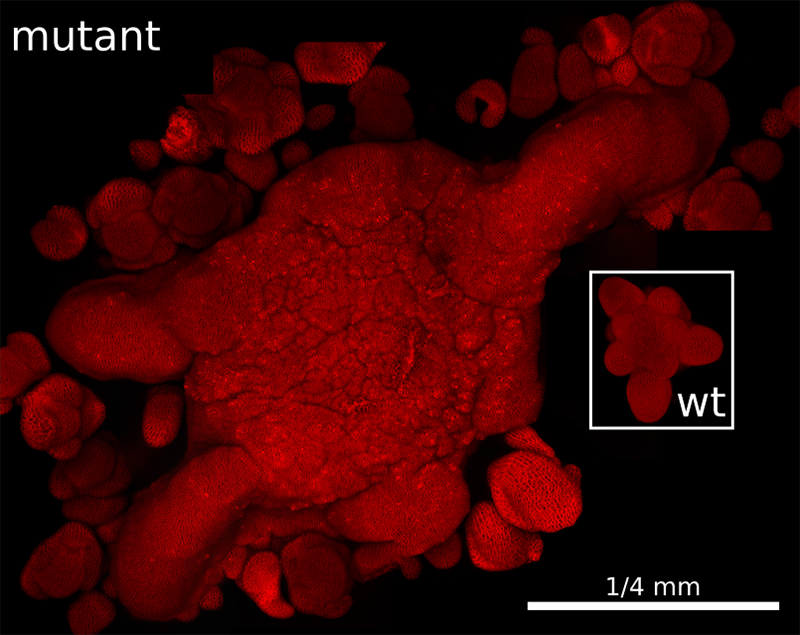Publication of the RDP in the journal Development, on June 10, 2024.
The architecture of the entire visible portion of a plant (stem, leaves and flowers) is controlled by a small group of about 20 stem cells, which lie at the tip of the growing shoot. These cells have to maintain their ability to generate different types of cells for thousands of years in some species, such as the giant sequoias. Many different teams have worked out the genetic and molecular properties of plant stem cells since the 1990s.
In a recent study, a team from the Plant Reproduction and Development laboratory (RDP, CNRS/ENS de Lyon/INARE) used novel biophysical techniques to examine these cells, using the model plant Arabidopsis thaliana (also known as thale cress). They found that these cells have unique mechanical traits, such that they are more rigid than their neighbours. But precisely why is higher stiffness important for plant architecture? This question turned the scientists to study the mechanics of mutant plants where stem cells are incorrectly regulated. The results were unexpected and led them to broaden there analysis of this mutant, including via a collaboration with mechanical engineers of the Centre for BioSystems Science and Engineering (India Institute of Science).
This international team observed that in mutants plants, where stem cell regulation is altered, the size of the stem is hundreds of times larger than in a normal plant. This phenomenon, which is also visible in plants such as strawberry and certain varieties of tomato, was thought to be due to an increase in the numbers of stem cells. However, in an article published in the June edition of the journal Development, they show that it is not as simple as that, because the cells of these giant plants do not possess most of the characteristics that are usually used to define stem cells.
This work therefore forces a reinterpretation of the mutant phenotype proposed 30 years ago. It also suggests that we need to broaden and redefine the concept of stem cells using novel benchmarks.

Credit: V. Battu, L. Rambaud-Lavigne and P. Das
Reference
Heterogeneous identity, stiffness and growth characterise the shoot apex of Arabidopsis stem cell mutants. Léa Rambaud-Lavigne, Aritra Chatterjee, Simone Bovio, Virginie Battu, Quentin Lavigne, Namrata Gundiah, Arezki Boudaoud, and Pradeep Das. Development, June 10, 2024.
- DOI : 10.1242/dev.202810
- To read: an interview with the authors






